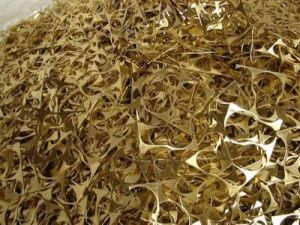
Brass scrap is more than just discarded metal; it represents a valuable resource for industries, individuals, and the environment. Whether you’re a business owner, a recycler, or someone curious about sustainable practices, understanding brass scrap can unlock numerous opportunities. In this blog, we’ll explore what brass scrap is, its benefits, recycling processes, common uses, and how it contributes to a circular economy.
What is Brass Scrap?
Brass is an alloy made primarily of copper and zinc, sometimes combined with small amounts of other metals to achieve specific properties. Due to its excellent durability, corrosion resistance, and aesthetic appeal, brass is widely used in various industries, including construction, plumbing, electrical work, and art.
Brass scrap refers to leftover, discarded, or obsolete brass materials that can be recycled instead of being wasted. This scrap comes from manufacturing offcuts, old plumbing fixtures, musical instruments, or decorative items.
Types of Brass Scrap
-
Yellow Brass: Commonly used in plumbing and hardware applications.
-
Red Brass: Known for its higher copper content, often used in valves and pump components.
-
Bronze Brass: A mix of brass and tin, used in bearings and machine parts.
-
Cartridge Brass: Typically used for ammunition casings.
Each type of brass scrap has a different value, depending on its composition and purity. Understanding these distinctions is crucial for effective recycling and resale.
Why is Brass Scrap Valuable?
Brass is a highly sought-after material due to its recyclability and versatility. Recycling brass scrap has multiple benefits:
-
Economic Value: Brass can be melted down and reused without losing its properties, making it a cost-effective resource for manufacturers.
-
Environmental Benefits: Recycling brass reduces the need for mining virgin copper and zinc, conserving natural resources and minimizing environmental damage.
-
Energy Savings: Recycling brass consumes significantly less energy than producing new brass from raw materials.
-
High Demand: Industries such as plumbing, automotive, and construction rely heavily on brass, ensuring consistent demand for recycled materials.
The Process of Recycling Brass Scrap
Recycling brass is a straightforward yet essential process that transforms waste into reusable material. Here’s a step-by-step overview:
-
Collection: Brass scrap is gathered from various sources, including manufacturing plants, households, and demolition sites.
-
Sorting: The scrap is sorted by type and quality to ensure purity and efficiency in recycling.
-
Cleaning: Contaminants such as paint, plastic, or dirt are removed to prepare the brass for melting.
-
Melting: The cleaned brass is melted in a furnace, often mixed with other materials to achieve desired alloy properties.
-
Casting: The molten brass is cast into sheets, bars, or other shapes for reuse in manufacturing.
-
Distribution: The recycled brass is sold to industries for creating new products.
Common Uses of Recycled Brass
Recycled brass finds its way into a variety of applications:
-
Plumbing Fixtures: Faucets, valves, and pipes.
-
Electrical Components: Connectors and terminals.
-
Automotive Parts: Radiators, gears, and bearings.
-
Decorative Items: Lamps, chandeliers, and jewelry.
-
Musical Instruments: Trumpets, saxophones, and trombones.
How to Make Money with Brass Scrap
If you have access to brass scrap, turning it into profit is easier than you might think. Follow these tips:
-
Identify Sources: Look for scrap in old plumbing, hardware stores, or construction sites.
-
Sort Efficiently: Separate brass by type to maximize its value.
-
Partner with Recyclers: Find local scrap yards or recycling companies that accept brass.
-
Understand Market Trends: Monitor brass prices to sell your scrap at the best rate.
-
Maintain Quality: Clean and prepare your brass scrap before selling to enhance its resale value.
Environmental Impact of Brass Scrap Recycling
Brass recycling is an eco-friendly practice that plays a significant role in reducing waste and conserving resources. Here are some environmental benefits:
-
Reduces Mining Impact: Recycling brass decreases the demand for virgin copper and zinc, minimizing deforestation and soil degradation caused by mining.
-
Lowers Carbon Emissions: The energy required to recycle brass is significantly lower than extracting and processing raw materials, reducing greenhouse gas emissions.
-
Decreases Landfill Waste: By recycling brass scrap, less metal waste ends up in landfills, promoting a cleaner environment.
Challenges in Brass Scrap Recycling
While brass recycling offers numerous benefits, it is not without challenges:
-
Contamination: Mixed or contaminated scrap can reduce the quality and value of recycled brass.
-
Sorting Difficulties: Identifying and separating different types of brass requires expertise and effort.
-
Market Fluctuations: Brass prices can vary, affecting the profitability of recycling.
Despite these hurdles, advancements in technology and increased awareness are making brass recycling more efficient and accessible.
Conclusion
Brass scrap is not just waste; it’s a golden opportunity to contribute to sustainability while earning a profit. By recycling brass, you support a circular economy, conserve natural resources, and reduce environmental impact. Whether you’re an individual collector, a business, or an environmental enthusiast, brass recycling offers immense potential.




Leave a Reply